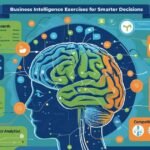Introduction: Bridging Centuries of Wisdom and Innovation
Imagine a farmer in 1850 watching a drone fly over his fields, scanning crops for disease.
He might call it magic — yet today, it’s science at work in agriculture.
The union of technology and traditional farming is more than convenience; it’s a transformation.
It promises better yields, reduced waste, and sustainable practices that keep traditions alive while embracing the future.
This isn’t about replacing ancient knowledge — it’s about enhancing it, much like fitting a classic violin with modern strings for richer music.
What Does Integrating Technology with Traditional Farming Mean?
Integrating technology with traditional farming is the practice of combining age-old agricultural techniques with modern tools like sensors, drones, AI analytics, and automated machinery.
It’s about blending human intuition — which comes from decades of soil, weather, and crop knowledge — with data-driven insights that machines provide.
Think of it as marrying the farmer’s eye with the scientist’s lens.
The Roots: How Farming and Technology First Met
The relationship between farming and technology isn’t new.
The plow, invented thousands of years ago, was once the height of innovation.
The 20th century brought tractors, irrigation systems, and chemical fertilizers.
Each leap forward kept core farming traditions intact but boosted efficiency.
In the 21st century, the pace has accelerated — from GPS-guided harvesters to blockchain-enabled supply chains.
Yet the heart of farming remains the same: growing food with care and skill.
Real-World Applications Across Agriculture
1. Precision Farming
Sensors in the soil measure moisture and nutrient levels.
Drones capture aerial images to detect early signs of disease.
Impact: Farmers can apply water, fertilizer, and pesticides only where needed, reducing costs and environmental harm.
2. Smart Irrigation Systems
IoT-enabled irrigation systems monitor soil and weather in real time.
They release water only when the soil requires it, preventing waste.
3. AI in Crop Management
AI models predict pest infestations, suggest planting schedules, and even forecast yields.
This transforms decision-making from reactive to proactive.
4. Market Access via Digital Platforms
Mobile apps let farmers sell directly to consumers or businesses, skipping middlemen.
This increases profits and market reach.
Comparison: Traditional vs. Tech-Integrated Farming
| Aspect | Traditional Farming | Tech-Integrated Farming |
|---|---|---|
| Decision Making | Based on experience and observation | Based on data + experience |
| Yield Potential | Moderate | High with optimized inputs |
| Environmental Impact | Can be high with overuse of resources | Reduced via precision application |
| Market Access | Limited to local buyers | Global through e-commerce and logistics |
| Labor Intensity | High | Reduced with automation |
This isn’t a battle of old vs. new — it’s a fusion that draws strengths from both worlds.
Future Implications: Risks and Opportunities
The future holds immense promise but also challenges:
Opportunities:
- Higher productivity with fewer resources.
- Improved resilience to climate change.
- Global market expansion for rural farmers.
Risks:
- Over-reliance on expensive tech may exclude small farmers.
- Data privacy concerns in farm management software.
- Possible loss of traditional knowledge if younger generations ignore it.
The key lies in balance — ensuring technology serves tradition, not replaces it.
Best Practices for Successful Integration
- Start Small – Test one technology before scaling up.
- Blend Data with Intuition – Use tech for insights, but rely on local knowledge too.
- Choose Affordable Solutions – Solar pumps, open-source apps, low-cost sensors.
- Train Continuously – Stay updated on emerging agricultural tools.
- Preserve Traditions – Keep crop rotation, seed saving, and soil care alive alongside innovation.
Designing for Harmony: A Farmer-Centric Approach
Technology should fit into a farmer’s daily workflow like a well-worn glove, not force a complete overhaul.
That means prioritizing tools that are:
- Easy to use
- Affordable
- Adaptable to local conditions
Governments, NGOs, and private tech companies can play a key role in making this possible.
Conclusion: Cultivating the Future Without Losing the Past
Integrating technology with traditional farming is not about choosing sides.
It’s about building a bridge where the wisdom of the past walks hand-in-hand with the possibilities of the future.
When we pair ancestral knowledge with innovation, we don’t just grow crops — we grow resilience, opportunity, and hope for generations to come.
FAQs About How to Integrate Technology with Traditional Farming
1. What is the biggest benefit of integrating tech with farming?
Higher yields with fewer resources, leading to sustainable agriculture.
2. Can small farmers afford modern tech?
Yes, with affordable options like mobile apps and solar-powered tools.
3. Does technology replace traditional farming skills?
No, it enhances them by providing better information for decisions.
4. Which tech tools are most useful for farmers?
Drones, soil sensors, smart irrigation, and AI-based crop management apps.
5. Will tech reduce farming jobs?
It may reduce manual labor but creates new roles in tech operation and maintenance.










